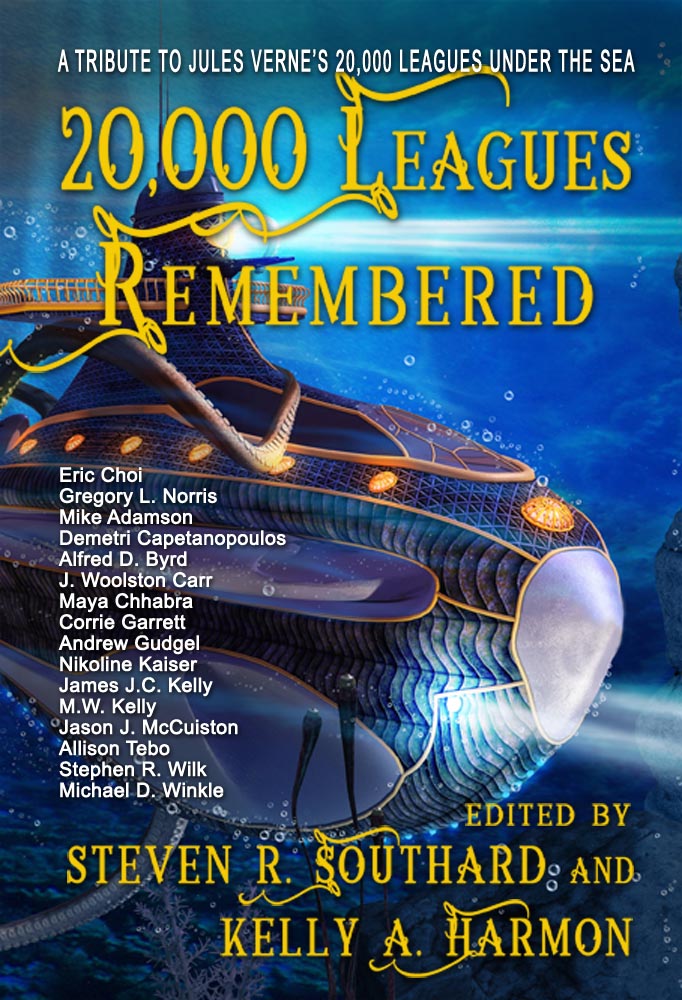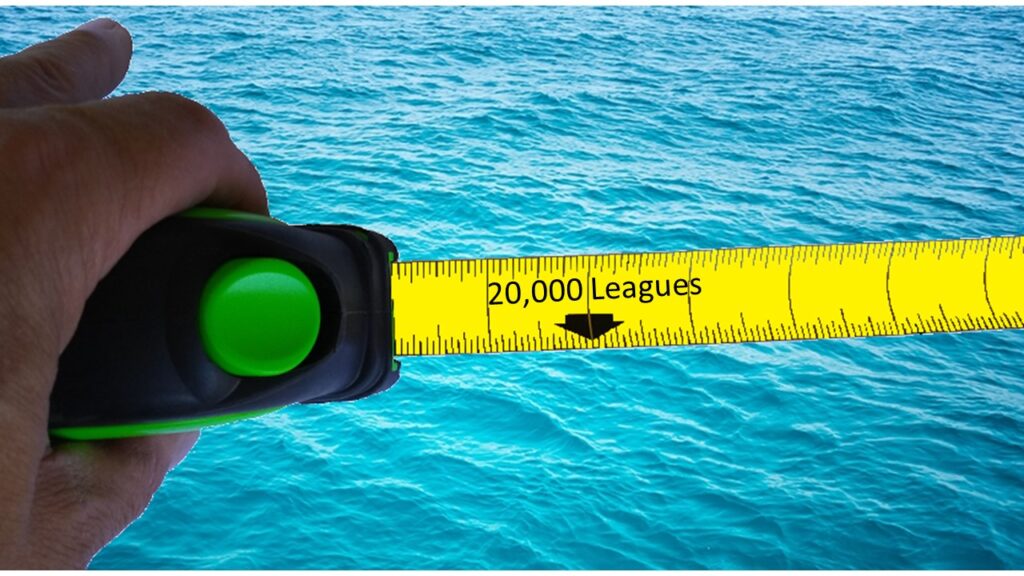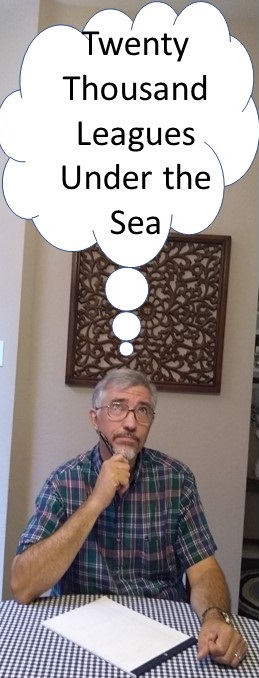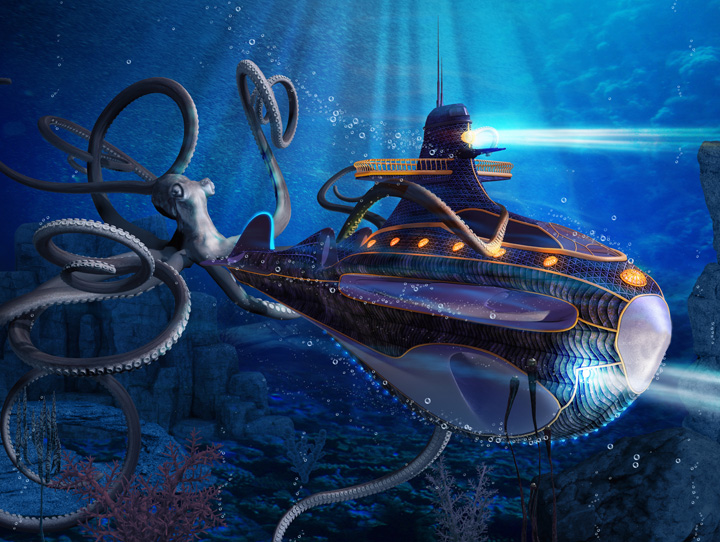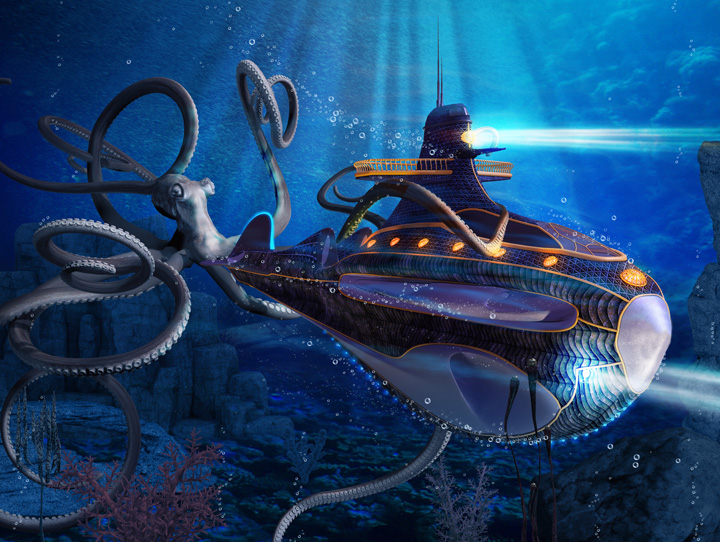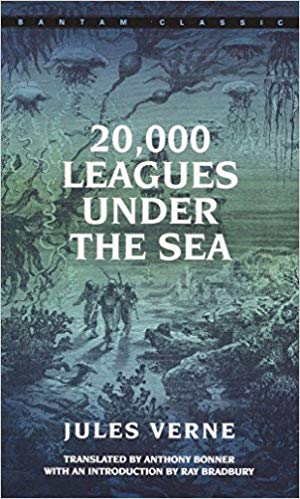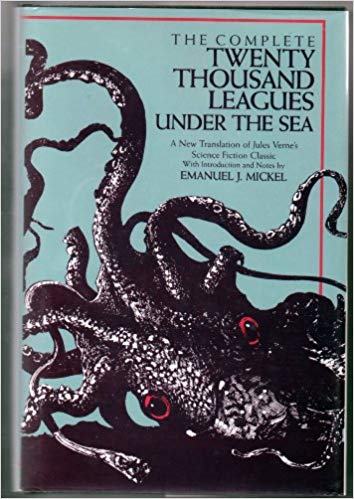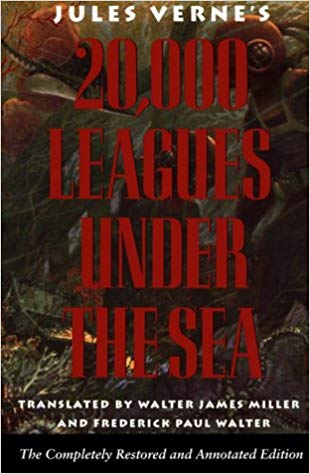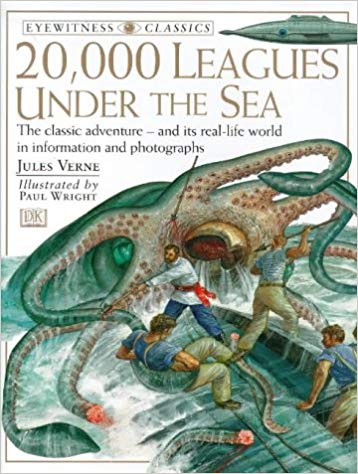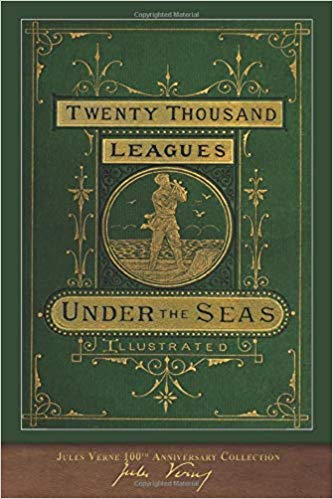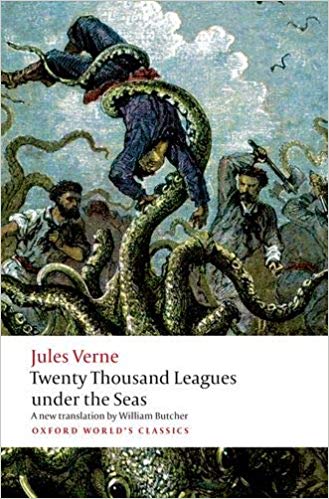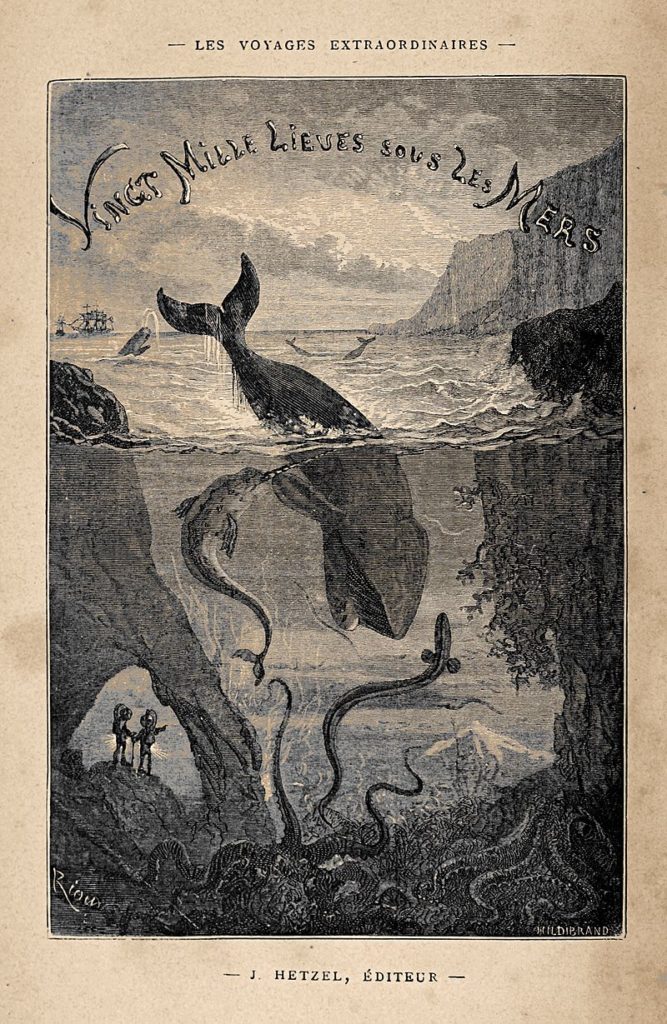Mobilis in Mobili—the motto of Jules Verne’s Captain Nemo. Or should that be Mobilis in Mobile? Let’s consider it.

Why even ask the question? Well, Verne’s publishers went back and forth, using mobili in some versions and mobile in others. It seems even they were confused.
The two are Latin words. I’m no expert in that language, but as I understand it, mobili is pronounced mob´il-ee and mobile is pronounced mob´il-ay.
Here’s the text from Twenty Thousand Leagues Under the Sea, as it appears in the 1993 translation by Walter James Miller and Frederick Paul Walker:
“Each utensil, spoon, fork, knife, plate, bore a letter encircled by a motto, of which this is an exact facsimile:

‘Mobile within the mobile element!’ That Latin motto was certainly appropriate for this submarine craft, so long as the preposition ‘in’ was translated as ‘within’ and not ‘upon.’ The letter N was no doubt the initial of the enigmatic person in command at the bottom of the ocean.”
Miller and Walker use their own motto image, with mobile. They state that mobili is plural and mobile is singular. Since Verne’s explanation in French (“l’element mobile”) is singular, they reason that the Latin word should be singular as well, hence mobile.
What does the motto mean? My old copy of Cassell’s New Latin Dictionary gives several meanings for mobilis including movable, easy to move, active, rapid, pliable, flexible, changeable, inconstant, with quick motion, easily, and quickly.
So we have ‘moving in a moving thing’ or ‘living free in a free world’ or ‘changing with change.’ Those first two meanings presume a singular object (moving thing or free world), so the singular mobile seems more appropriate for them.
At this point, many of you are thinking of the Monty Python Latin lesson scene in the movie Life of Brian. Now imagine John Cleese as Professor Aronnax staring at the Nautilus’ tableware and correcting Captain Nemo’s Latin!
Now that your head is spinning from that language discussion, permit me to urge you to buy and read the new anthology from Pole to Pole Publishing—20,000 Leagues Remembered. It’s available in ebook form now, and soon in paperback.
To finish up, I’ll confess to an unscholarly preference for mobili. It looks more like a Latin word than mobile, which is identical to the English word mobile.
Still, despite my preference, I guess I must be flexible and willing to change, and must therefore bow to the experts. Mobilis in Mobile it is. As you can see, there are few people more mobilis than—
Poseidon’s Scribe

